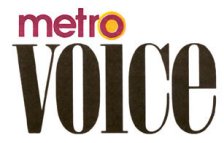Oklahoma schools receive guidelines on using the Bible

Oklahoma this week sent out guidelines to the state’s school districts on incorporating the Bible into classroom instruction.
The guidelines outline how the Bible can be used in a non-religious role to investigate the development of civilization, the founding of America and its already-noted value as a great work of literature. In addition, it can be studied in terms of how it has influenced music, art, culture and civil rights.
Ryan Walters, superintendent of Oklahoma state schools prescribed the mandate in a letter sent to all public school superintendents across Oklahoma in late June. During a news conference, Walters described the Bible as a “necessary historical document to teach our kids about the history of this country, to have a complete understanding of Western civilization and to have an understanding of the basis of our legal system. It is one of the most foundational documents used for the Constitution and the birth of our country.”
Challenges are being lined up to the new law but the Supreme Court has previously ruled in separate cases that the Bible may be used in instruction in any subject where it has a connection.
To comply with the High Court’s ruling, the guidelines ask instructors to teach it “in a manner that emphasizes only its historical, literary, and secular benefits.”
“The Bible has been a key cornerstone in the development of Western thought, influencing legal systems, ethical frameworks, and cultural norms,” the guidelines read. “Teachers must focus on how biblical principles have shaped the foundational aspects of Western societies, such as the concepts of justice, human rights, and the rule of law.”
Teachers will be able to underscore the Bible’s effect on the policy or goals of such people as Abraham Lincoln and Martin Luther King, Jr., both of whom quoted extensively from its texts.
READ: The Bible and Schools
How the Bible can be incorporated in instruction
Teachers will explore the Bible’s influence on great literature while also studying the literary techniques of the Bible’s authors. Students will be able to then recognize similar themes in classical literature, poetry and even modern movies, music and theater.
“This approach allows students to appreciate the Bible’s literary craftsmanship without delving into religious doctrine,” the guidance states.
Art instruction will allow teachers to investigate how the Jewish and Greek writings of the Bible influenced “the cultural and historical significance rather than the religious content,” of the arts, the guidelines state.
In 2010, then-Oklahoma Gov. Brad Henry signed a bill into law allowing high schools to offer elective courses on the Old and New Testaments to teach students “knowledge of biblical content, characters, poetry, and narratives that are prerequisites to understanding contemporary society and culture, including literature, art, music, mores, oratory, and public policy.”
While the Oklahoma law has received hyper-media attention and pushback from many on the left. It is not the only state that uses the Bible in daily instruction.
Many states have established standards recommending the teaching of religion in social studies, the arts, and literature, according to the Heritage Foundation which follows the issue closely. It reports that California “requires teaching about religions in its History-Social Science Framework. Additionally, the California County Superintendents Educational Services Association and the First Amendment Center sponsor a statewide program called the California 3Rs Project, which conducts seminars, forums, and workshops on teaching about religions and student religious liberties.”
Some school districts are upset with the new guidelines.
–Dwight Widaman | Metro Voice







